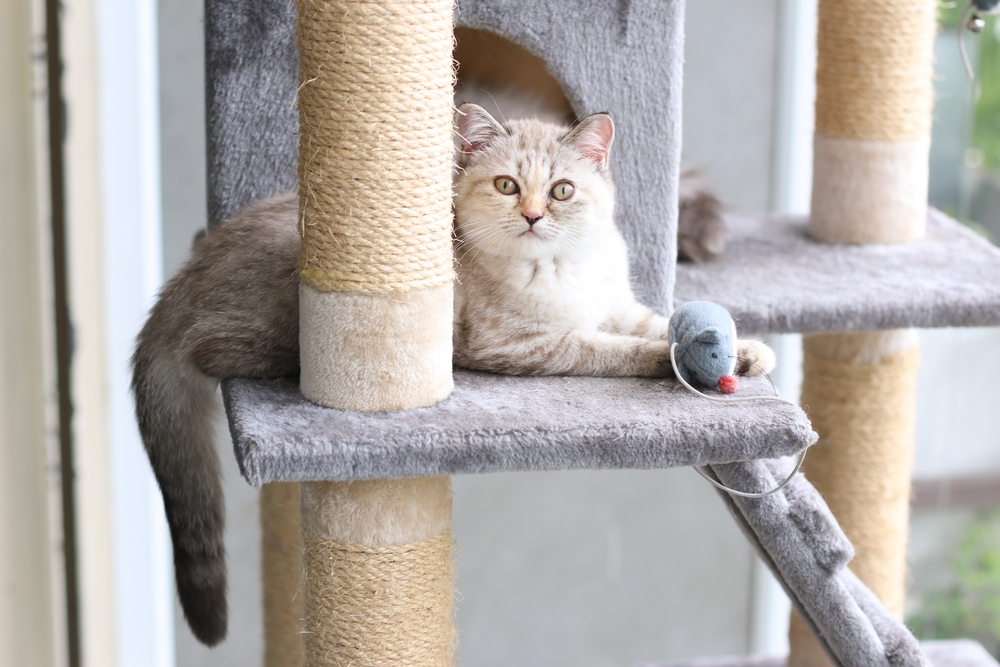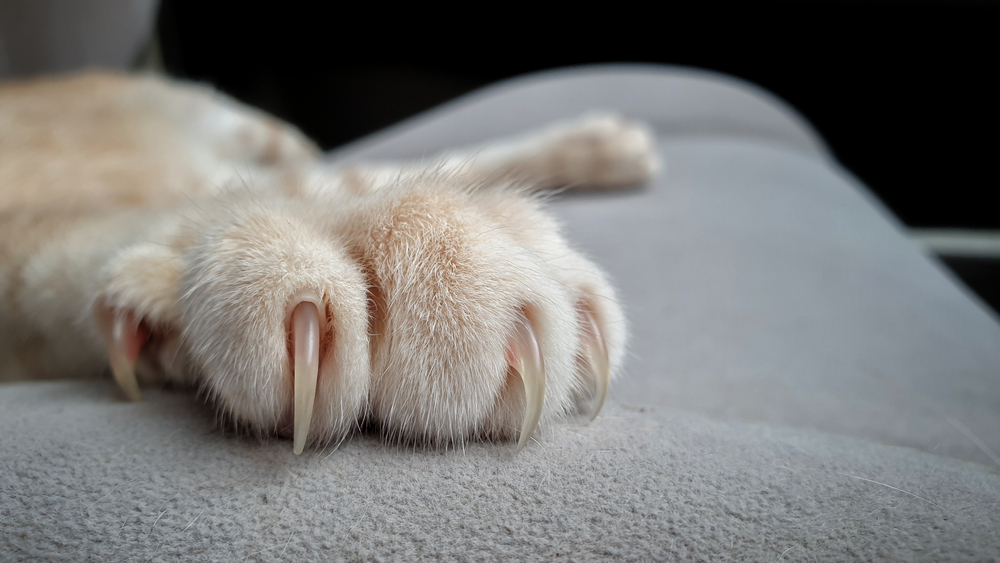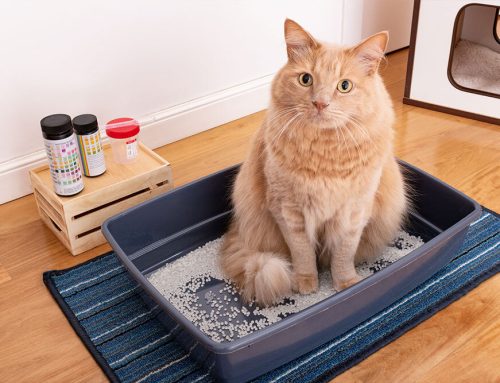Scratching is a natural feline marking behavior to communicate territorial boundaries, but what happens when your cat is laying claim—and claw—to your personal belongings or decor? First, don’t get angry—cats don’t scratch out of spite or revenge. Second, know your options—declawing is not the only way to curb destructive feline scratching. Rather than jumping to drastic measures, let the Driftwood Animal Hospital team help you find a healthy and effective alternative to declawing your cat.
What happens during a feline declaw
A declaw may sound straightforward, but more than removing the nail is involved. Onychectomy is a surgical amputation (i.e., disarticulation) of the third phalanx or bone of each toe, similar to removing part of your index finger at the knuckle to remove your fingernail.
Although many myths surround declawing, when performed with delicate surgical technique, effective pain management, and thoughtful post-operative care, the procedure can be safe and uneventful. However, declawing should be considered only after all non-surgical strategies have been thoroughly explored and exhausted—never as the first response.
Declaw complications in cats
In addition to rising concerns over the ethics of declawing cats, poorly performed declaws can result in significant side effects, including:
- Chronic pain — Arthritis or nerve damage can occur if too little or too much tissue and bone are removed.
- Limping — Cats may favor one paw or have shifting leg lameness.
- Back pain — Cats may shift weight to their hind legs to relieve pain, resulting in chronic back soreness.
- Behavior changes — Adult declawed cats may experience stress and anxiety.
- House soiling — Cats can develop an aversion to their litter box because of pain or litter granules adhering to their toes. Your cat may not recognize non-traditional substrates, such as newspapers, as litter, causing them to eliminate elsewhere, and form an inappropriate urination or defecation habit.
- Claw regrowth — If the declaw is incomplete (i.e., nail tissue remains), the claw will regrow, requiring a second procedure.
Alternatives to feline declaw
With so much at stake, non-invasive methods should clearly always be attempted first. Like dogs, cat behavior can be shaped, managed, or redirected through positive reinforcement.
Trim your cat’s nails regularly
In addition to marking territory, cats scratch to stretch their bodies, flex their toes, and maintain nail health by filing away dead outer layers. Maintaining your cat’s nails with regular trimming won’t eliminate their desire to scratch, but damage to household items and harm to human skin will be reduced.
Cats are generally tolerant of nail trims, as long as they are not restrained too tightly, which may cause them to panic. During training, take lots of breaks and reward your cat with tasty treats. For additional tips, catfriendly.com is a great resource, or contact us for a demonstration.
Apply plastic caps to your cat’s claws
Nail caps can prevent cats from causing pain or damage, while still allowing them to go through the scratching motions. Caps, which are applied over the nail with a small amount of adhesive, fall off on their own, and need replacement every few weeks. While this method requires some amount of cat cooperation and isn’t suitable for all felines, caps can be a gamechanger for many cat homes. Need assistance applying nail caps to your cat’s paws? Our Driftwood Animal Hospital team is happy to help.
Create designated cat scratch areas
If no alternative is available, cats will choose their own scratching post—which may be your heirloom armoire or your leather sofa. Providing cats with a designated place to dig in their nails can prevent them from making inappropriate choices.
You may have to try several different styles of scratching posts, pads, and boards to determine your cat’s preference:
- Material — Cats may prefer sisal rope, carpet, or corrugated cardboard.
- Orientation — Although most cats enjoy a vertical post, seniors may prefer a slightly inclined surface or a horizontal mat.
- Size — Ensure vertical scratching posts are sturdy, as well as tall enough to allow your cat a full-body stretch.
- Locations — Place a scratching area or post near your cat’s litter box, resting areas, and favorite places, such as near a window or perch.
- Use an attractant — Feliscratch attracts cats and kittens with natural cat-friendly territory messages that encourage them to scratch the treated area. When used consistently for one month, Feliscratch effectively redirects and retrains your cat’s scratching behavior—in a language they understand.
- Use pheromones to discourage “wrong” locations — As you use Feliscratch to attract, use Feliway to make undesirable scratching surfaces less appealing. Apply this cat-safe pheromone spray to furniture, bedding, or previously damaged areas.
Give your cat plenty of physical and mental exercise

Like many destructive behaviors, scratching can result from boredom or insufficient exercise. Try engaging with your cat through play and focused attention for at least 5 to 10 minutes twice a day. Provide enrichment toys and interactive feeders that encourage predatory behaviors (e.g., foraging, stalking, pouncing, and chasing) to physically and mentally satisfy your cat.
If your cat is still inappropriately scratching after trying these techniques, contact Driftwood Animal Hospital. Your cat may need a physical examination to rule out potential health-related reasons for their behavior. Declawing or rehoming your feline friend don’t have to be the only options—contact us to discuss your cat’s needs, or to schedule an appointment.








Leave A Comment